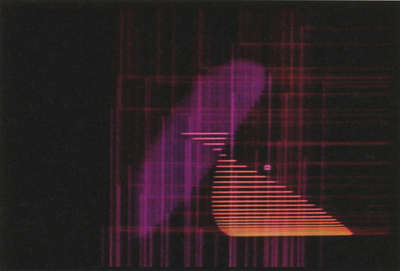John Whitney, Sr. was an U.S.American animation film maker, composer and inventor, popularly recognised as one of the fathers of computer animation.
From his first work with 8 mm film of a solar eclipse recorded with a home-made telescope, to the early innovative experiments with computer graphic systems, John Whitney Sr. has developed and deployed technology for artistic usage.
He was assisted by his family members in many projects which linked musical composition with experimental film and computer imaging. Since his recognized works in the first International Experimental Film Competition in Belgium, 1949, to his masterpiece Arabesque in 1975, John Whitney remained a true pioneer until his death in 1996.




